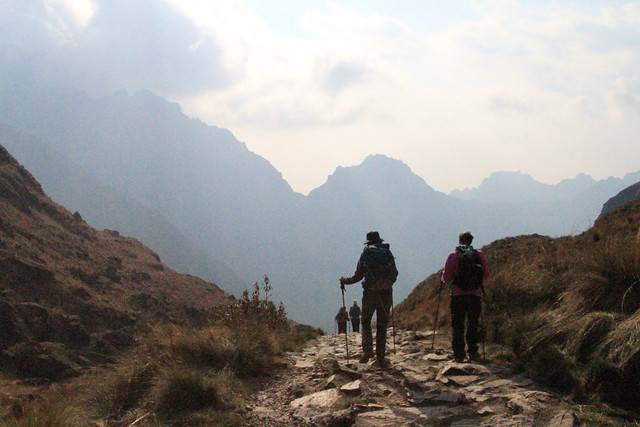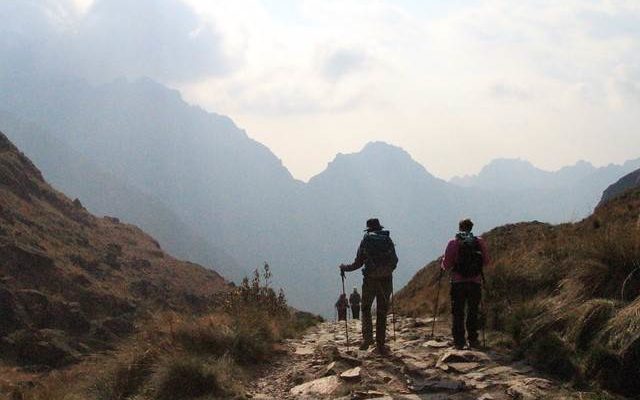Peru is a hiker’s paradise. The scenery is stunning—llamas grazing in the shadows of majestic glaciers, locals doing chores in their colorful garb, exotic birds flitting through the cloud forest. As you pass through rural mountain communities, you gain a glimpse into a lifestyle that is not much different from that of the Incas.
My biggest obstacle to enjoying this hiking experience, though, is the discomfort that comes from hiking at high altitude. There never seems to be enough air. A hike I might consider moderately strenuous at sea level turns into an epic endurance event at altitude.
Since I trek at least a couple times a year in Peru to scout potential routes, I’ve had to find ways to make the experience more comfortable, more doable.
Here are the eight lessons I’ve learned that work for me.
Do drugs. I always take Diomox. I start a couple of days before I arrive at high altitude. I continue the medication during the hike until I get to a reasonable altitude (for me that‘s about 8,000 feet) and I know I won’t be ascending again. I’ve found that it’s better to stay ahead of the symptoms than to deal with them once they appear, especially when hiking. Who wants to hike with a pounding headache or sick stomach?
Chew coca leaves. You’ll see the porters on the Inca Trail chewing coca leaves all day long. When I trek in Peru, I do too. They help me breathe at high altitude. One word of caution, though–coca leaves can give you an upset stomach. So, if you’ve never had them, try them before you leave the comfort of your hotel room.
Drink plenty of water. It is essential to combating altitude sickness. I also think it’s easy not to realize how much water you are losing. This is because the air is so dry that you don’t realize how much you are sweating. This makes dehydration a real possibility.
Focus on exhaling. This seems counterintuitive. However, I’ve found when I focus on exhaling strongly, I can inhale more deeply. This means I don’t run out of breath as quickly.
Slow down. I once followed an old Quechua woman up a steep path. She strolled slowly. I did the same. I realized that it was better to go at a pace I could maintain for a really long time than to have to stop constantly to catch my breath because I was hiking too fast.

Take small steps going uphill. The steeper the incline, the smaller my steps. This trick reduces the level of effort needed to climb.
Traverse the hill. When I neared 13,000 feet on the Salkantay trek, I hiked back and forth across the path and slowly ascended. I’m sure it looked weird, but it reduced the level of effort I needed to make progress.
Be patient. People who live at sea level are not going to move as fast at high altitude. There is no need to compete with the locals who will pass you moving at top speed in their flip-flops. So, relax and enjoy the scenery. You’ll make it to camp in due time.



